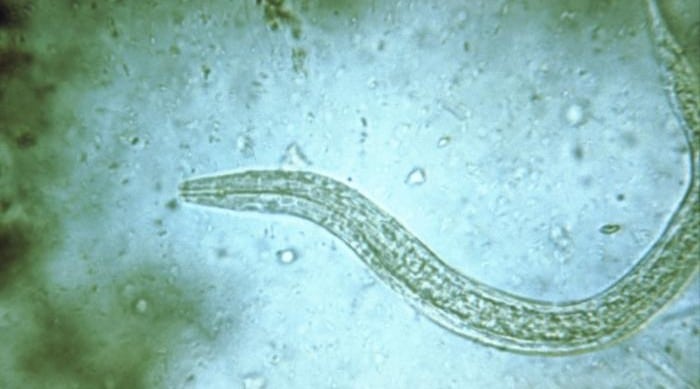WHAT ARE HOOKWORMS ?
Hookworms are tiny parasites belonging to the phylum of nematodes. The larvae of these worms measure between 2 and 3 millimeters and are found in humid soils. They are common in tropical areas. At the adult stage, they can reach 5 to 13 millimeters. There are two species of hookworms affecting humans : Necator americanus and Ancylostoma duodenale. They both have mouth pieces shaped like hooks, which enable them to hang on the intestinal wall of their host. Hookworms are responsible for a disease called ankylostomiasis.
HOW DO HOOKWORMS AFFECT HUMANS ?
The larvae of hookworms penetrate into the body of their victim through their skin, when it is in contact with humid soil, sand or mud. After the larvae have entered into the human body, raised itchy red spots can be observed on the affected area (usually the feet or the buttocks). The parasites then move to the lungs via the bloodstream, causing coughing symptoms. Later, they migrate again through the windpipe, before being swallowed and reaching the digestive track, where they hook themselves on the intestinal mucous membrane. At this stage, the victim experiences diarrhea and belly aches. In some cases, anemia can occur. Among children, infections with hookworms can generate growth disorders and brain development troubles.
WHO IS AT RISK OF HOOKWORMS ?
Anybody can be victim of hookworms. According to Medeline Plus, more than one billion people are affected worldwide. The people most at risk are the persons living or traveling in humid areas, especially in tropical regions. Children are especially at risk, as they tend to play and to sit down everywhere. So are people walking barefoot or with opened shoes on the sand or in the mud, like holidaymakers on the beach and gardeners for example.
HOW TO PREVENT INFECTIONS WITH HOOKWORMS ?
To prevent larvae of hookworms from penetrating into your body, you should always wear high closed shoes when you walk on the sand or in hot and shady humid areas. On the beach, sit on two or more towels, or on a chair. Whenever possible, stay away from the zones where larvae may be present. Frequently wash your hands and your feet. If you work in your garden, wear gloves.



